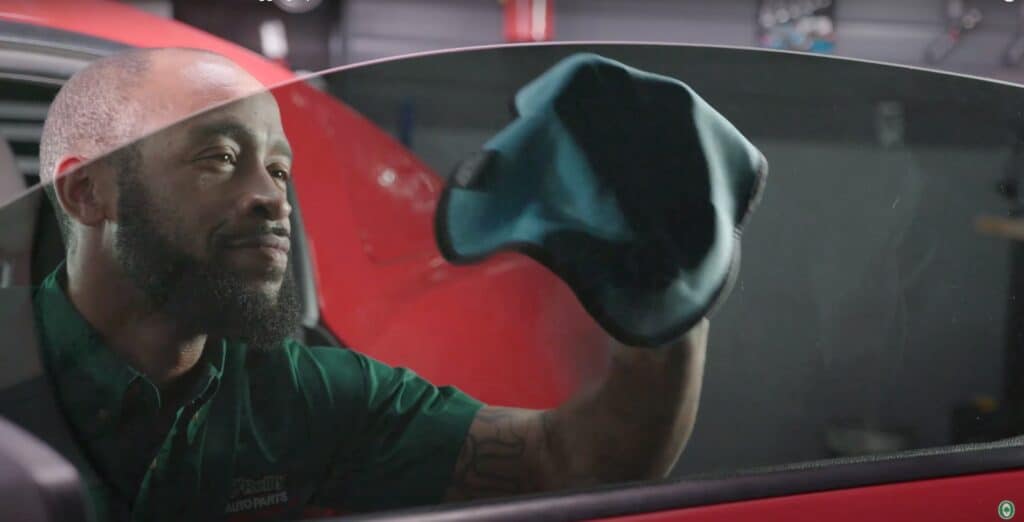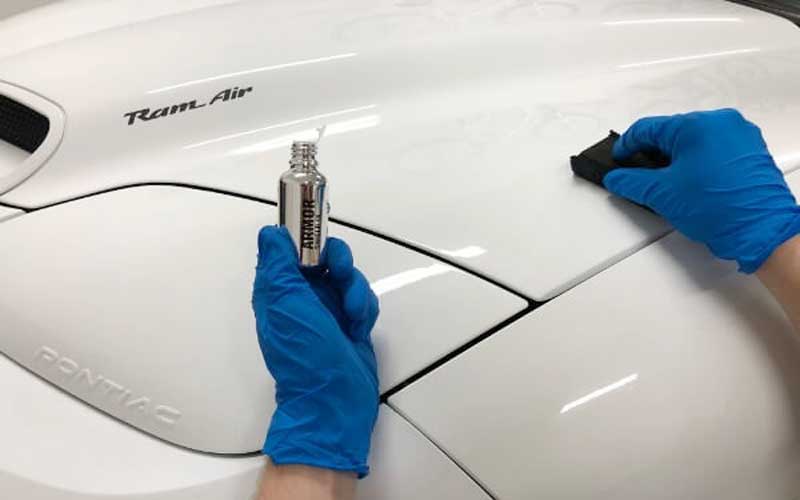Foggy windows. The official sign of a good time at a drive-in movie double-feature, and a royal pain in the ass when you are running late and need to be able to see ASAP. Not only is this global occurrence impartial as to what form of glass it develops upon, but it’s pretty damn dangerous to boot.
So what can be done to prevent this petty yet pervasive form of condensation from afflicting your car windows with swaths of steamy obfuscation? Before attempting to fix a foggy window, one must first come to grips with the causes of fog formation.
In order to understand this concept, you will need two parts scientific nerd talk, one part automotive engineering jargon, and a dash of common sense. The result? A deeper understanding of condensation, and the ability to prevent said visual interference before it even begins to form.

What Causes a Car Window to Fog?
Anyone who’s ever attempted to reach second base in the backseat of their parent’s station wagon knows that serious smooching results in fogged-over windows. But scientifically speaking, why does fog form? The answer is two-fold. Fogged glass is caused when a threshold in temperature differences between the air and a piece of glass is achieved, may it be all on one side, or in the case of automotive glass, a combination of outside and inside atmospheric interference. Throw a splash of humidity into the mix, and things get even steamier.
Why Do My Windows Fog So Often in Winter?
For the answer to this question, we turn to the insurance staple, Allstate, for it provides a pretty accurate explanation as to why cold weather prompts heavy fogging inside of a vehicle. Again, this has everything to do with temperature differences and the moisture content found within the air itself.
Ever exhale deeply on a cold day and see your breath? How about breathing on a window when it’s cold outside, only to watch it fog-up? With every breath, you add both heat and humidity to your environment. So when that environment is an enclosed space, condensation is quick to form. Factor in things like the snow on your boots, the steam coming off that cup of coffee or hot cocoa, as well as the heat being cranked out of your car’s air vents, and you’ve got the perfect storm for condensation creation. Hell, even the presence of body heat can trigger this reaction.
Quick Nerd Note: In an article on cars.com, which discusses why some windows fog over, while others remain clear, the topic of condensation formation is brought forth. University of Illinois physics professor, Mats Selen, explains, “…when warm, moist air is cooled, it eventually gets to a temperature at which the air can no longer support all the water, which starts to condense. That’s the dew point, or the point at which moisture begins to settle on cold surfaces.”

Why Do Windshields Fog When it Rains?
Exterior condensation can also be caused by cold rain on car glass. This is pretty much the same scenario as when it’s cold outside, so adjusting interior temps so that they can match the outside is going to be your best bet for offsetting this issue. So flip on those windshield wipers, and make sure your AC system is sucking-in outside air. Once that’s done you’ll have to play the defog balancing act until a temp is reached that mirrors the rain pelting your vehicle’s windscreen.
“When relative humidity is 100%, it means that if the temperature goes down any more, then the water has to come out somewhere. On a cool morning, when there’s dew on the ground or fog, that’s because you have warm, moist air that comes in contact with the cool ground.”
– Mats Selen, University of Illinois physics professor
How Come There’s Fog on My Windows in Summer, Too?
On a muggy day, the roles are reversed, and it is the humid air outside your vehicle that is causing those cool windows to fog-over. As the dew point on your windshield is catalyzed by the cold blast from the AC system, fog begins to thicken on the glass. Fortunately, windshield fog is just as quick to dissipate as it is to form, and unlike ice, an attempt to defog the windows does not require a ton of elbow grease. But we’ll get to all that jazz here in a minute, because when you are getting “royally fogged up,” there are a few risks that must be taken into consideration.

Dangers of Fogged Car Glass
Regardless as to whether the fog that has formed on your vehicle’s glass is on the inside or outside, condensation creates visibility risks, which can be a real danger to you and those around you. Hampered visibility remains a major cause of accidents the world over, so de-ice your car, defog that glass, and know that you may need to factor in some additional commute time in order to offset the repercussions of the atmosphere’s moisture level that particular day.
How to Get Rid of Foggy Car Windows
Now it’s time to focus on the nuts and bolts of the matter, because while there may not be a “best way” to remove fog from a windshield, there are some damn good ones out there.
For winter defogging, we suggest first adjusting your temp controls so that you are sucking-in outside air instead of recirculating it, and then toggling the defrost setting in your vehicle so that the car’s heater is engaged. This should be accompanied by adjusting cabin temps so that it’s on the hottest setting, and then flipping on the AC and cracking a window. This will not only help evaporate any moisture that’s condensed within the vehicle, but neutralize the difference in air temps.

Quick Nerd Note: There’s a reason why you want your vehicle’s ventilation system to not be recirculating air. When the climate control system’s recirculation button is toggled, your car recirculates the air within the vehicle instead of funneling fresh ozone in from outside. So if there’s a temp difference you wish to negate, keep that outside air flowing.

Other Tips for Getting Rid of Fog on Car Glass
In order to keep your car windows free from fog, you should maintain a diligent cleaning routine, both outside and within.
While the exterior is prone to getting covered in dirt, hard water spots, road salt, grime, and acid rain, the interior portion of an automobile’s glass forms a far more delicate filth. This translucent film may be difficult to detect when conditions are dry, but the minute condensation forms, all the dust and gunk suspended in the air gets stuck to the wet surface. The result: A fog that is difficult to remove, and when visible, very challenging to see through. So stick with that glass cleaning regiment, because it does make a difference.
The removal of this film can be accomplished with a highly quality automotive glass cleaner, a microfiber towel, and a bit of polishing. Most modern day auto glass cleaning products are safe for laminated glass windows and window tint. Just be careful not to allow it to soak into that delicate vinyl or leather dashboard, and always use a freshly cleaned microfiber cloth.
It may sound like a gimmicky late-night infomercial pitch, but hitting the interior side of your automobile’s glass with an anti-fog product can make a huge difference in deterring the formation of fog. Look for a product that packs both cleaning and repellent properties, as it will both remove the foggy film that forms on the inside of the glass and prevent it from forming. Regardless as to whether you’re tackling some spring cleaning, a dash of fall car care, or just want to do a quick touch-up on some cold glass as you winterize your car, the use of anti-fog chemicals is always a good idea.












